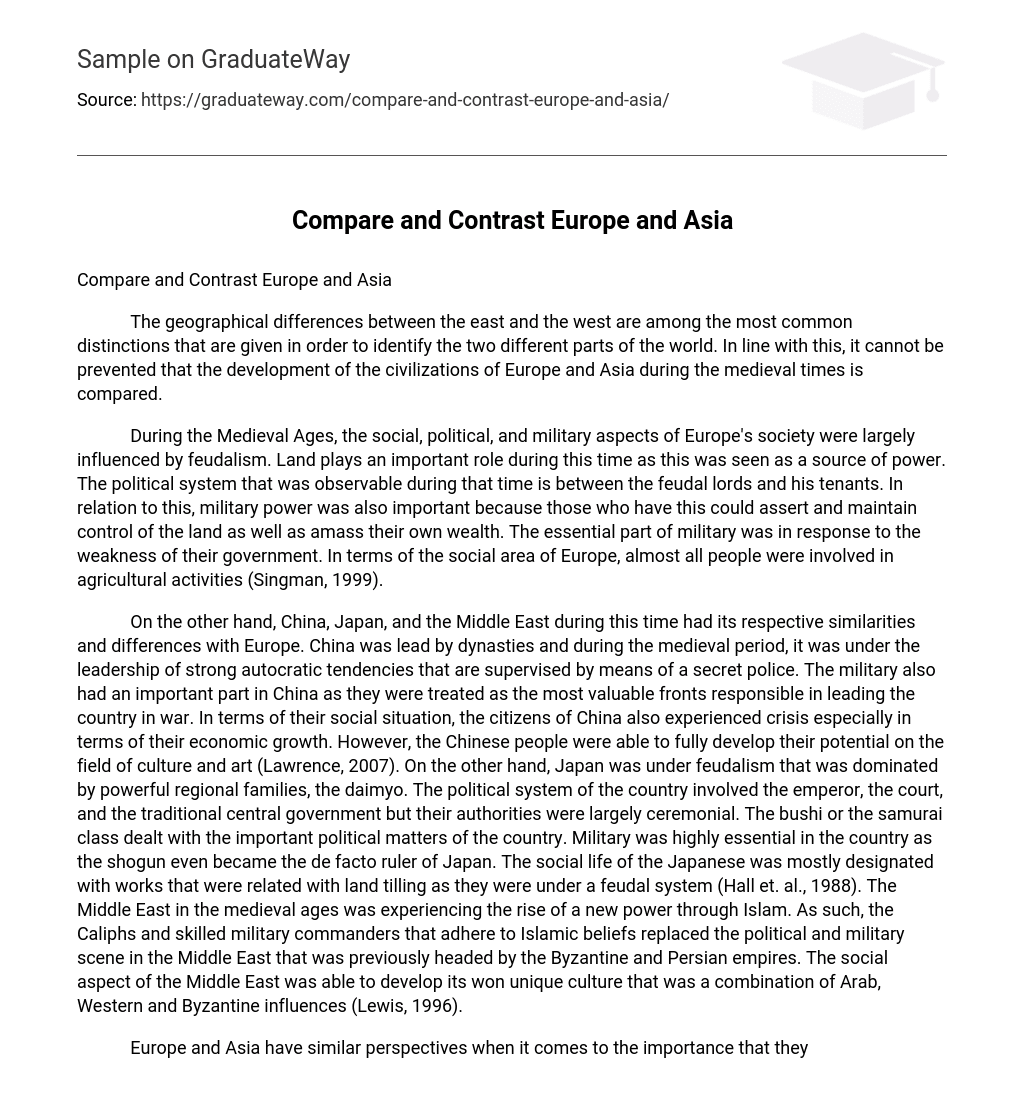The geographical differences between the East and the West are among the most common distinctions used to identify these two different parts of the world. As a result, it is inevitable that comparisons are made between the development of European and Asian civilizations during medieval times.
During the Medieval Ages, feudalism largely influenced the social, political, and military aspects of Europe’s society. Land played a crucial role during this time as it was considered a source of power. The political system observed during that time was between the feudal lords and their tenants. Military power was also significant because those who possessed it could assert and maintain control of the land while accumulating wealth. The military’s essential part was in response to their government’s weakness. Almost all people were involved in agricultural activities in terms of Europe’s social area (Singman, 1999).
On the other hand, during this time, China, Japan, and the Middle East had their respective similarities and differences with Europe.
In China, dynasties led the country. During the medieval period, strong autocratic tendencies were supervised by means of a secret police. The military played an important role in China as they were treated as the most valuable fronts responsible for leading the country in war. In terms of their social situation, Chinese citizens also experienced crises especially in terms of economic growth. However, they were able to fully develop their potential in culture and art (Lawrence, 2007).
Japan was under feudalism dominated by powerful regional families called daimyo. The political system involved the emperor, court and traditional central government but their authorities were largely ceremonial. The bushi or samurai class dealt with important political matters of Japan while military was highly essential as even shogun became de facto ruler of Japan. Social life was mostly designated with works related to land tilling under a feudal system (Hall et al., 1988).
The Middle East during medieval ages experienced rise of new power through Islam where Caliphs and skilled military commanders that adhere to Islamic beliefs replaced political and military scene previously headed by Byzantine and Persian empires. The social aspect developed its own unique culture that was a combination of Arab, Western and Byzantine influences (Lewis 1996).
Europe and Asia share similar perspectives regarding the importance of their military. Additionally, during feudal times, Europe and Japan both adhered to this system. However, they differ in terms of their central government’s function; Europe has a weak government while the East has a stronger and more stable political body. Lastly, they also differ in social development as some focused on agricultural activities while others prioritized enhancing their cultural heritage.
References.
Hall, J.W., Mass, J.P., and Davis, D.L. (1988) wrote a book titled Medieval Japan: Essays in Institutional History” which was published by Stanford University in California.
Lawrence, D.M. (2007). Dynastic, Political, and Economic Timeline of China. Retrieved on June 11, 2009, from http://www.rootsweb.ancestry.com/~chnwgw/table.htm.
Lewis, B. (1996). A Brief History of the Last 2,000 Years. Scribner.
Singman, J.L. (1999). Daily Life in Medieval Europe. Cincinnati: Greenwood Publishing Group.





